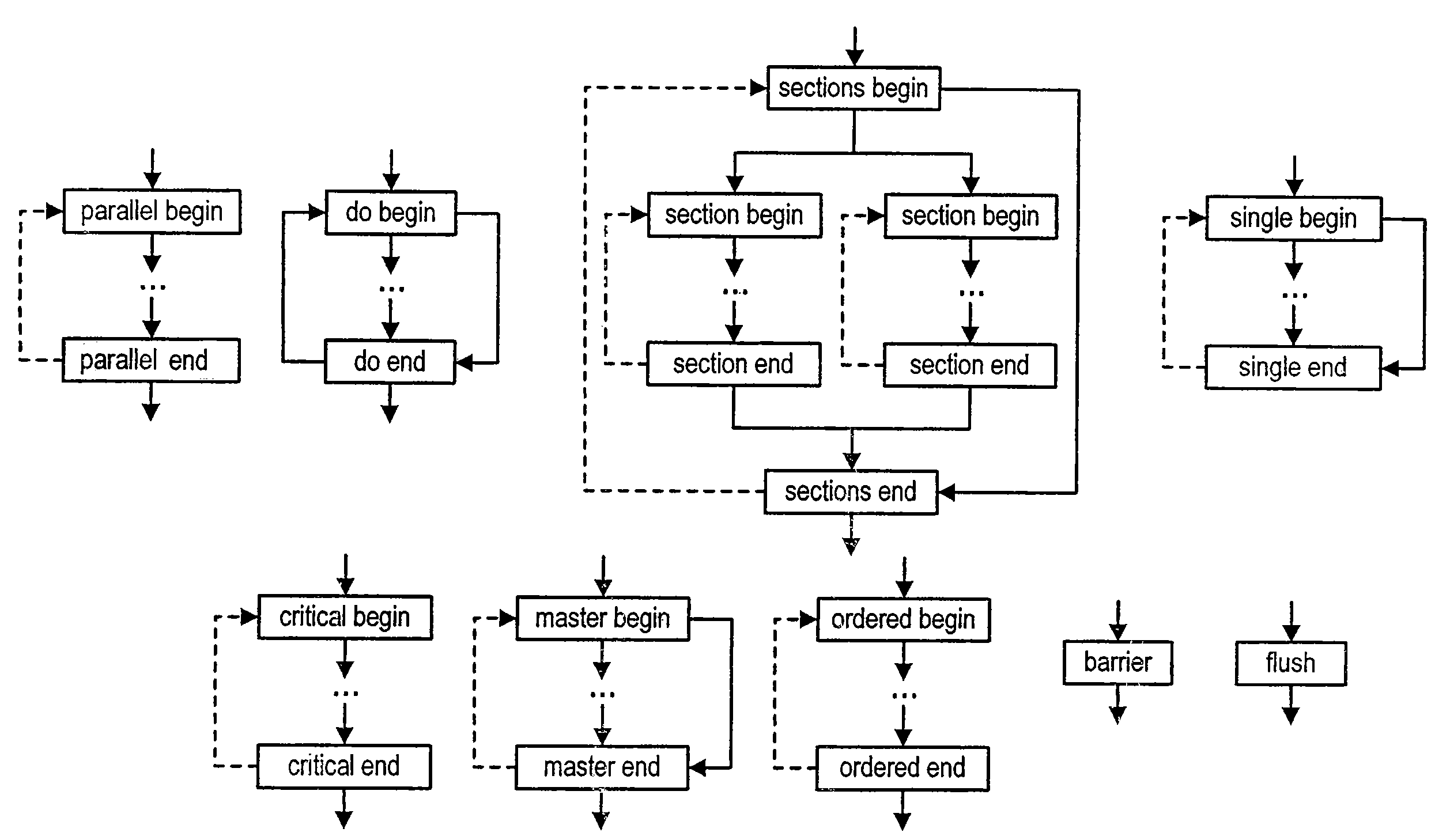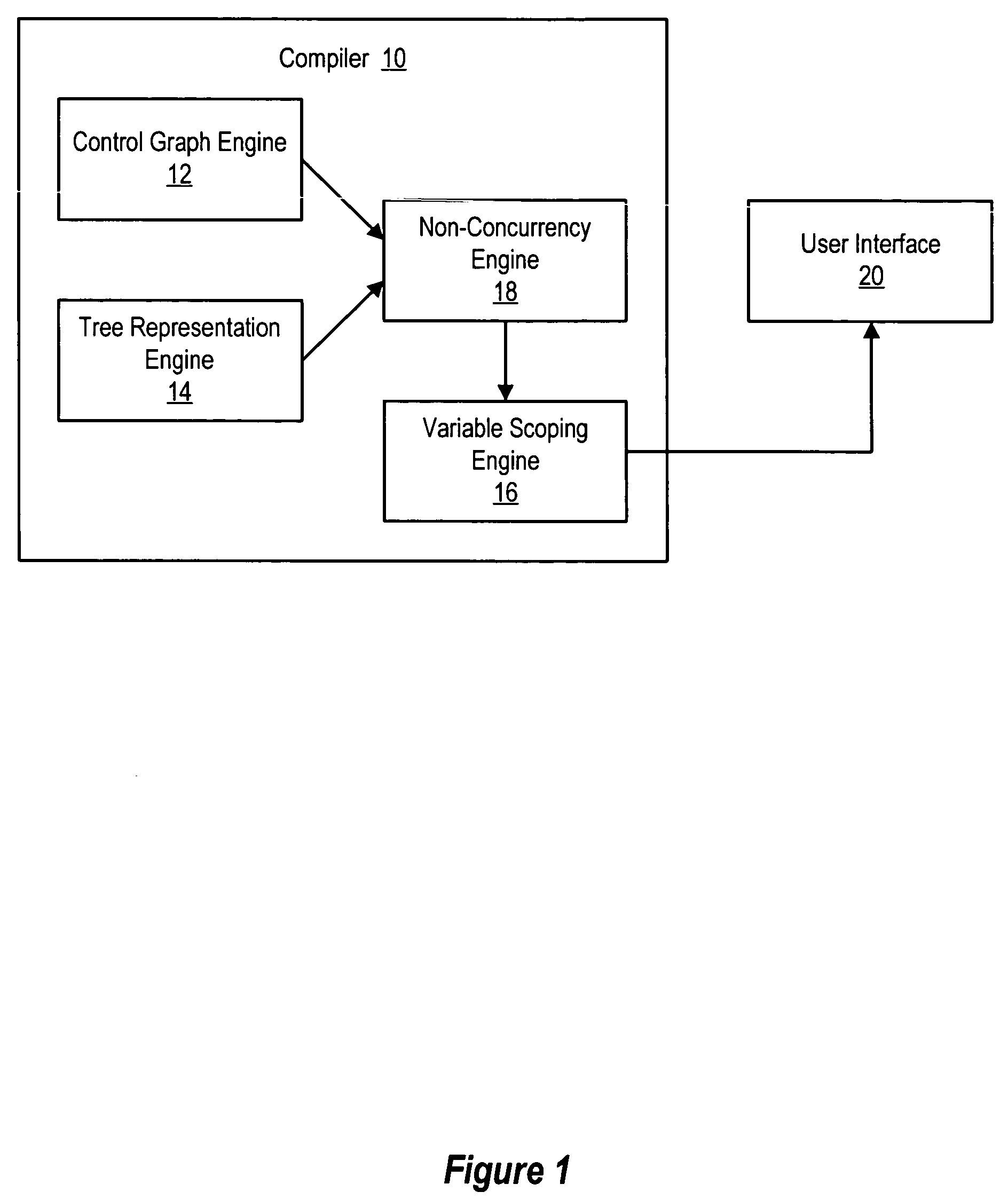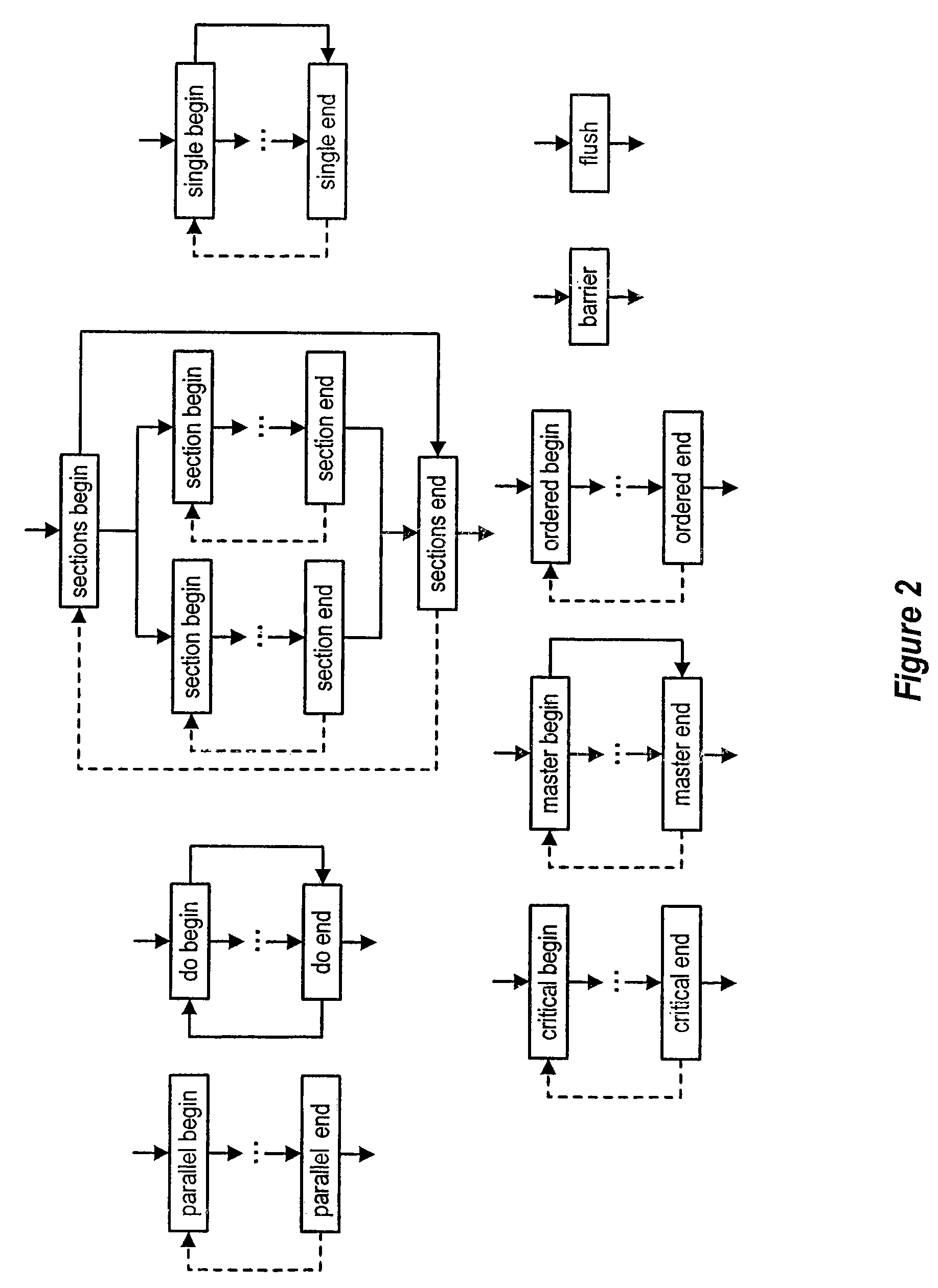System and method for compile-time non-concurrency analysis
a non-concurrency analysis and parallel program technology, applied in the field of parallel program compilation, can solve the problems of undeterministic program behavior, inability to generalize, and difficulty in writing correct and efficient parallel programs, so as to improve the efficiency of run-time detection and reduce the overhead of run-time detection
- Summary
- Abstract
- Description
- Claims
- Application Information
AI Technical Summary
Benefits of technology
Problems solved by technology
Method used
Image
Examples
Embodiment Construction
[0019]Compile-time detection of non-concurrency in parallel programs aids in optimization of program performance by taking advantage of parallel processing without introducing errors through synchronization anomalies. A compiler automatically analyzes the semantics of OPENMP directives and takes advantage of the well-constructed nature of compliant OPENMP programs to determine non-concurrency within a parallel program phase. The system and method described herein use an OPENMP program in the base sequential language of Fortran, although the system and process may be applied to alternative programs and / or base languages. The non-concurrency analysis provides a close underestimate of the actual non-concurrency in a parallel program so that determination of non-concurrency is deterministic while a failure to determine non-concurrency indicates that two statements may but need not execute concurrently. Detection of concurrent execution of two statements by different threads in a team al...
PUM
 Login to View More
Login to View More Abstract
Description
Claims
Application Information
 Login to View More
Login to View More - R&D
- Intellectual Property
- Life Sciences
- Materials
- Tech Scout
- Unparalleled Data Quality
- Higher Quality Content
- 60% Fewer Hallucinations
Browse by: Latest US Patents, China's latest patents, Technical Efficacy Thesaurus, Application Domain, Technology Topic, Popular Technical Reports.
© 2025 PatSnap. All rights reserved.Legal|Privacy policy|Modern Slavery Act Transparency Statement|Sitemap|About US| Contact US: help@patsnap.com



